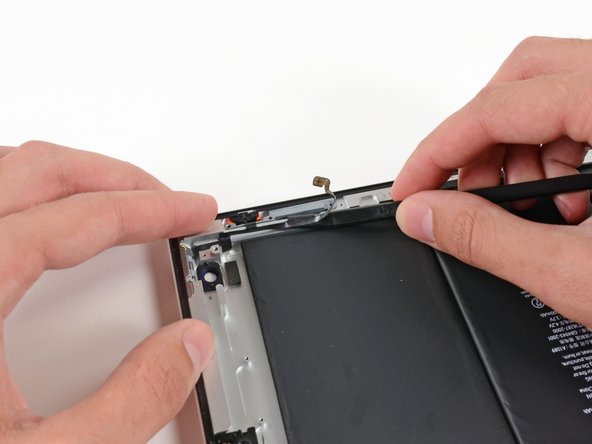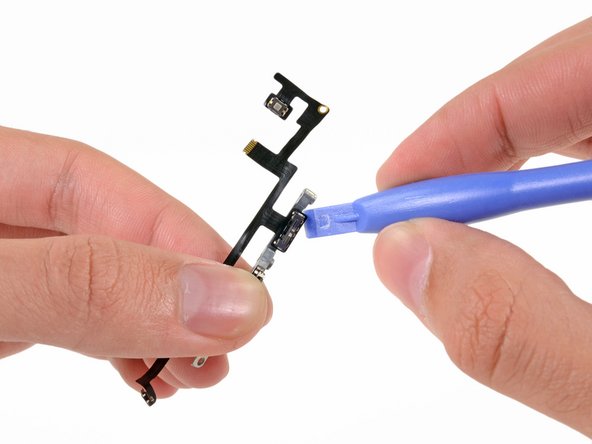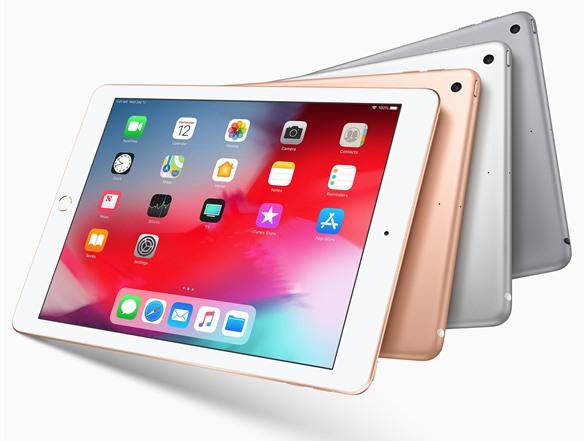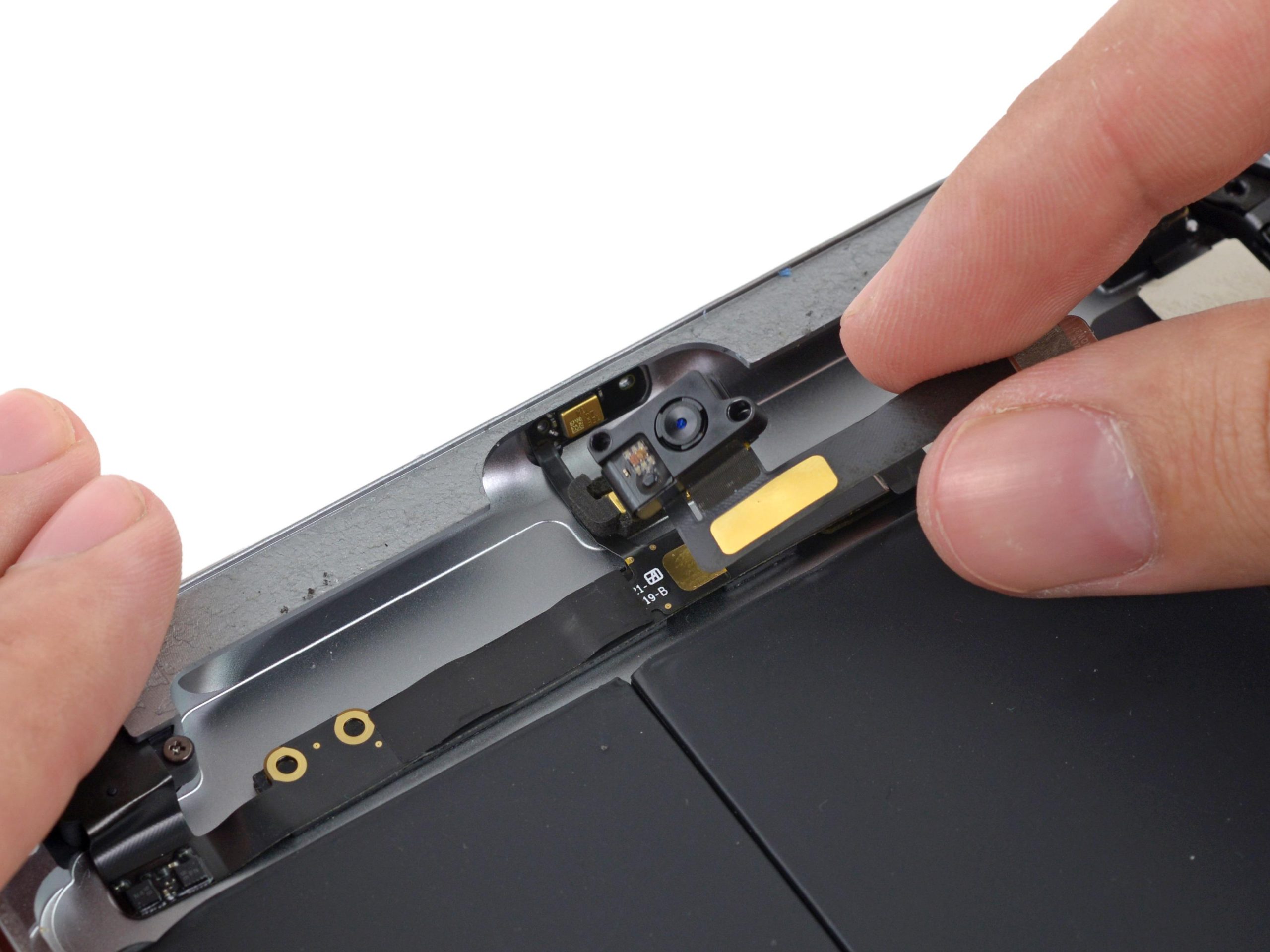DIY Guide to Replace iPad Wi-Fi Antenna Steps
Duration: 45 minutes
Steps: 60 Steps
Hey there, repair superstar! Just a quick heads up: make sure you’re taking all the necessary precautions while diving into this repair. Safety first, fun second! And remember, if things get tricky, you can always schedule a repair with us. We’ve got your back!
Get ready to tackle the replacement of those Power & Volume buttons! Follow this guide, and you’ll be back in control in no time. If you need help, you can always schedule a repair.
Step 1
Before diving into the repair, it’s a smart move to give your microwave a quick clean. Trust us, you don’t want any leftover mess sticking to the iOpener during your repair adventure!
– Center the iOpener in your microwave like it’s the star of the show.
Tools Used
Step 2
Keep an eye on that iOpener during your repair journey! If it gets too hot, it might just explode with excitement. Remember, no heating over 100˚C (212˚F) – we want a safe and smooth operation!
If your iOpener looks like it’s been hitting the gym and is a bit swollen, give it some space. It’s not in a good mood!
If the center of your iOpener is still feeling a bit too toasty to touch, hang tight and let it cool off a bit before you reheat it. A nicely warmed iOpener should keep the heat for about 10 minutes, so you’ve got time!
– Give your iOpener a quick thirty-second spa session in the microwave.
– As you work through the repair, keep that iOpener toasty by giving it another thirty seconds in the microwave whenever it starts to cool down.
Tools Used
Step 3
Watch out! The iOpener is going to be pretty toasty, so handle it with care. A trusty oven mitt might just be your best buddy here.
– Carefully take the iOpener out of the microwave, gripping it by one of the flat ends to steer clear of that hot center. You’ve got this!
Tools Used
Step 4
If you don’t have a microwave handy, no worries! Just pop your iOpener into some boiling water for a quick warm-up.
– Grab a pot or pan and fill it up with enough water to give your iOpener a nice bath.
– Get that water boiling and then turn off the heat. Safety first!
– Carefully drop the iOpener into the hot water for about 2-3 minutes. Make sure it’s taking a nice soak and is fully submerged.
– Use some tongs to pull out the iOpener from its steamy spa session.
– Give the iOpener a good towel dry—no one likes a soggy iOpener!
– And voilà, your iOpener is all set to help you out! If it needs a little more heat, just repeat the boiling process and let it chill in the water for another 2-3 minutes.
Tools Used
Step 5
Put on those safety glasses to keep your peepers safe, and remember to treat that LCD screen with care like it’s a delicate piece of art.
– If your display glass is cracked, let’s keep that breakage under control and protect yourself while you tackle this repair by applying some tape to the glass.
– Grab some clear packing tape and lay down overlapping strips over your iPad’s display until the entire face is nicely covered.
– Now, just do your best to follow the rest of the guide as laid out. Keep in mind that once the glass is broken, it may keep cracking while you work, so you might need to use a metal prying tool to gently scoop out the glass.
Step 6
Just a heads up! While you’re tackling this repair, you might encounter some pesky broken glass. We highly recommend rocking some safety glasses to keep those flying shards at bay. Stay safe and stylish!
– Place the iOpener snugly on the right edge of your iPad, making sure it sits nice and flat for optimal contact. We want that warmth to work its magic!
– Give it about 90 seconds to work its charm before you dive in and try to pop open the front panel.
Tools Used
Step 7
Getting that wedged tip of the opening tool between the glass and plastic might take a bit of elbow grease. Take your time and be gentle—wiggle that trusty plastic opening tool back and forth as needed to work your magic.
– Hey there! Notice that tiny gap in the iPad’s adhesive ring at the upper right corner? It’s about 2.0 inches (~5 cm) from the top, and it’s your golden opportunity to get started.
– Now, grab your tool and line it up with the mute button. Carefully slide the tip of a plastic opening tool into that little gap between the front glass and the plastic bezel. Just nudge the very tip in, enough to give that crack a little wiggle.
Step 9
– With the plastic opening tool snugly positioned between the front glass and plastic bezel, gently slide a plastic opening pick into the gap right next to it. You’re doing great—keep it steady!
Step 10
– Take out that trusty plastic opening tool from your iPad, and gently slide the opening pick a little deeper under the front glass—aim for about 0.5 inches. You’ve got this!
Step 12
The adhesive is super strong, so you might need to put in a little muscle. Take your time and be gentle!
If you can spot the tip of the opening pick peeking under the front glass, gently pull it out just a tad. While going this deep with the pick won’t cause any harm, it might leave a bit of adhesive residue on the LCD. Just a heads up!
– While you’re warming up the bottom edge with the iOpener, start loosening that sticky adhesive from the right edge of your iPad.
– Gently slide the opening pick down along the iPad’s edge, letting it work its magic on the adhesive as you go.
Tools Used
Step 13
You might want to slide that warm iOpener back onto the right edge of the iPad while peeling off the adhesive. How long the iPad has been cooling off while you’ve been at it will determine if this is necessary.
– If the opening pick is feeling a bit clingy in the adhesive, just give it a gentle roll along the edge of the iPad to help it break free. Keep on rolling to release that sticky situation!
Tools Used
Step 14
– Before you dive in and pull out that first opening pick from the bottom corner of the iPad, slide a second pick under the right edge of the front glass to keep that pesky adhesive from making a comeback.
– Give your iOpener a little reheat love, then place it at the top edge of the iPad.
Tools Used
Step 15
Hey there! Just a heads up: the Wi-Fi antenna is snugly fastened to the bottom right edge of your iPad’s rear case with screws and a cable. Given its position, it’s super important to take things slow and steady. A little care goes a long way in avoiding any unintentional oopsies that could damage the Wi-Fi antenna for good.
– Alright, folks! As we dive into the next few steps, let’s keep our wits about us. It’s all about being careful here.
– You’ll need to gently free the adhesive that’s holding the antenna to the front panel, but do watch out for those delicate bits that connect the antenna to the bottom of your iPad. Take your time and follow these steps closely!
Step 16
Hey there! Just a friendly reminder: don’t push that pick too far into the bottom right corner. It might give the Wi-Fi antenna a little too much love, and we definitely don’t want that!
– Gently glide that opening pick around the bottom right corner of your iPad, freeing up the adhesive like a pro.
Step 17
Take your time with this step and gently glide the opening pick along the bottom right edge of the front panel. The Wi-Fi antenna is sneaky and hangs out near the corner, so be careful not to accidentally cut it while releasing the adhesive. You’ve got this!
Just give the pick a little wiggle and pull it out slightly—leave about 1/8″ (3 mm) of the tip cozy under the front glass. You’ve got this!
– Gently glide the tip of your opening pick along the bottom edge of the iPad to let go of the adhesive holding the Wi-Fi antenna in place. You’re doing great!
Step 18
– After you’ve navigated past the Wi-Fi antenna, which is about 3 inches (75 mm) from the right edge, or just a hop away from the home button, slide that trusty opening pick back in all the way.
– Now, give that pick a gentle nudge to the right to free the adhesive that’s holding the Wi-Fi antenna snug against the front glass.
Step 19
Keep the iOpener’s heating session short and sweet—no more than a minute at a time! And give it a little breather for at least two minutes before heating it up again. You’re doing great!
– Keep working that adhesive loose along the bottom of the iPad, gently pulling the opening pick out far enough to navigate around the home button. Once you’re past the home button, slide it back in to a depth of about 1/2 inch (10 mm). You’ve got this!
Tools Used
Step 20
– Keep on peeling that adhesive all the way along the bottom edge of your iPad—you’re doing great!
– Now, slip that opening pick right under the front glass near the home button and let it chill there.
Step 22
If the adhesive has cooled down a bit too much, just pop the iOpener back along the top edge and keep going. If the iOpener itself has gotten a bit chilly, give it another round of heat!
– Gently glide the opening pick along the top edge of your iPad, giving it a little tug to navigate around the front-facing camera bracket.
– The adhesive in this area is pretty strong, so you might need to put in a bit of elbow grease. Take your time and be careful to avoid any slips that could harm you or your iPad.
– If the opening pick seems to be stuck in the adhesive, try giving it a little roll as demonstrated in step 9.
Tools Used
Step 23
If the adhesive is nice and toasty, feel free to take out the iOpener from the iPad for easier handling. But if it’s still holding on tight, give the iOpener another heat-up and place it on the left edge while you get to work.
– Keep working that adhesive loose along the top edge of the iPad, and gently maneuver the opening pick around the top left corner. You’ve got this!
Tools Used
Step 24
Hey there! The digitizer cable is hanging out about 2″ (50 mm) from the bottom of your iPad. When you’re sliding that pick, make sure to stop when you reach around 2.25″ (60 mm) from the bottom. You’re doing great!
– Gently slide the opening pick along the left edge of your iPad, easing the adhesive loose as you go. Don’t worry, the adhesive here is pretty thin thanks to the digitizer running along that side. Just keep the pick’s depth to a max of 1/2 inch (10 mm) to avoid any mishaps with the digitizer. You’ve got this!
Step 25
Careful now! The digitizer cable is hanging out just about an inch (25 mm) from the bottom of the iPad. Take your time and work with precision to avoid cutting this little guy. You’ve got this!
– With that trusty opening pick still wedged under the bottom edge of your iPad, gently free the adhesive in the bottom left corner. You’ve got this!
Step 26
– Grab one of those nifty opening picks and gently lift the bottom right corner of the iPad. Once it’s up, give it a little pinch with your fingers to hold it in place.
Step 27
Watch out for any stubborn adhesive that might still be clinging on! Grab an opening pick to gently slice through any sticky bits holding the front panel in place. You’ve got this!
– Grab your iPad by the top and bottom right corners and gently twist the front glass away from the device. You’re doing great!
– As you put everything back together, don’t forget to give that LCD a little love! Use a microfiber cloth and some compressed air to wipe away any pesky dust or fingerprints before sealing the glass back on.
Step 28
– Unscrew those four 2 mm Phillips #00 screws that are holding the LCD to the aluminum frame. You’ve got this!
Step 29
– Grab your trusty plastic opening tool or spudger and gently lift the right edge of the LCD out of your iPad. Nice and easy!
– Now, rotate that LCD along its left edge and carefully lay it down on top of the front panel. You’ve got this!
Tools Used
Step 30
– Grab your trusty spudger and gently peel back that pesky tape hiding the LCD ribbon cable connector. You’ve got this!
Tools Used
Step 31
– Gently lift the retaining flap on the LCD ribbon cable ZIF connector. You’ve got this!
– With a careful touch, use your fingers or a pair of tweezers to ease the LCD ribbon cable out of its cozy spot on the logic board. You’re on the right track!
Step 32
– Gently lift the LCD off the front panel, but remember, no touching the front of that screen!
Step 33
If needed, gently lift the tape that holds the digitizer ribbon cable to the logic board. You’ve got this!
– Gently lift the retaining flap on both of the digitizer ribbon cable ZIF connectors. You got this!
Step 34
– Grab your trusty spudger and gently slide the flat end under the digitizer ribbon cable to break that adhesive seal. It’s like giving it a little nudge!
– Now, with the utmost care, pull the digitizer ribbon cable straight out of its cozy sockets on the logic board. You’re doing great!
Tools Used
Step 35
– Gently lift the digitizer ribbon cable and use the flat end of a spudger to carefully break the adhesive bond holding the cable to the back aluminum case.
Tools Used
Step 36
– Time to get those fingers moving! Gently pull the digitizer ribbon cable out of its cozy spot in the aluminum frame.
– Now, let’s take off that front panel from the iPad. You’re doing great!
Step 37
– Gently peel back the electrical tape that’s cozying up to the headphone jack assembly cable connector and say goodbye to it.
– Now, grab your trusty spudger and, with a little finesse, flip up the retaining flaps on both ZIF connectors holding that headphone jack cable to the logic board. You’ve got this!
Tools Used
Step 38
– Gently slide the flat end of a spudger under the headphone jack assembly cable to free it from the adhesive that’s holding it snug against the rear aluminum frame.
– Carefully pull the headphone jack assembly cable straight out from its cozy home on the logic board.
Tools Used
Step 39
– Gently peel back the adhesive tape that’s holding the headphone jack assembly in place and say goodbye to those sticky troubles!
Step 40
– Grab your trusty spudger and gently nudge the front-facing camera connector away from its cozy home on the headphone jack assembly. It’s like giving it a little vacation!
– Now, slide that spudger to the right and watch as the adhesive lets go of the camera cable. It’s a smooth move that keeps things flowing!
Tools Used
Step 42
– Gently slide the spudger’s tip under the microphone ribbon cable to free it from its ZIF connector—easy does it!
– Now, give that spudger a little nudge to the left to let go of the adhesive that’s keeping the microphone ribbon cable cozy with the headphone jack assembly.
Tools Used
Step 43
– Gently lift the retaining flap that’s holding down the volume/power button ribbon cable connector to the headphone jack assembly board. You’ve got this!
– Carefully detach the volume button ribbon cable from its ZIF connector. Easy peasy!
Step 45
– Carefully lift the headphone jack assembly ribbon cable away from the foam pad located at the top left of the rear case. It’s like peeling a banana, but for your device!
– If it feels a bit stuck, grab the flat end of a spudger and give the adhesive a gentle nudge to help it release its grip on the foam.
Tools Used
Step 46
– With both hands, gently grab the headphone jack assembly and give it a little tug to pull it away from the iPad, being careful not to snag any cables along the way. You’ve got this!
Step 47
– Unscrew those screws holding the power and volume button cable to the aluminum frame. You’ve got this!
Step 49
– Gently take out the lone 2.6 mm Phillips #00 screw that’s keeping the volume button frame snug against the aluminum body. You’ve got this!
Step 50
– Carefully slide the edge of a plastic opening tool under the sleep/wake sensor—just a gentle nudge, no need to play rough with that delicate cable!
– Once you’re in, glide the tool around the sensor to peel away the adhesive like a pro.
Step 51
– Keep gliding that trusty plastic opening tool under the power and volume cables, gently breaking free the adhesive that’s holding them down. You’re doing great!
Step 52
– Grab your trusty spudger and gently work its tip under the adhesive holding down the volume button section of the ribbon cable. You’ve got this!
Tools Used
Step 54
– With the spudger tip snugly positioned beneath the ribbon cable, gently coax the power button out of its cozy home in the aluminum frame.
Tools Used
Step 55
– With both hands on the power & volume button cable, gently coax the volume buttons and lock switch out of their cozy little homes in the aluminum frame.
– Now, lift the power & volume button cable and gracefully remove it from the rear aluminum case.
Step 56
– Gently slide the tip of your trusty plastic opening tool underneath the upper edge of the power button.
– Carefully lift the top part of the power button away from its cozy bracket.
Step 57
– Don’t forget to give the underside of that power button some love—just repeat the last step there!
– Now, gently lift and take out the power button bracket from the power & volume button assembly. You’re doing great!
Step 58
– Gently slide the tip of your trusty plastic opening tool beneath the upper side of the rotation lock/mute switch.
– Carefully glide the plastic tool downwards to nudge the topside of the rotation lock/mute switch free from its snug little bracket.
Step 59
– Slide the tip of your trusty plastic opening tool under the top volume rocker and give it a gentle nudge upwards to pop it free from the volume buttons bracket. You’re doing great!
– Now, do the same for the bottom volume rocker and watch it separate from the bracket like magic. Keep up the awesome work!
Step 60
– Gently lift and detach the ribbon cable for the power and volume buttons. You’ve got this!





























































































































